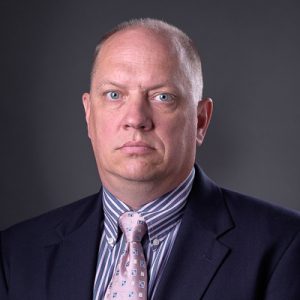Global Experiences in Smart Metering – Tactical Loss Reduction in Developing Countries
Published via the IEEE Smart Grid Newsletter – June 2021
Written by Aaron F. Snyder, Vadim Zheglov, and Michele Pastore
In the developing world, there is a wave of smart grid technology implementations driven by the desire to reduce “commercial” losses (another term for “non-technical” losses, or those not directly related to the power system infrastructure). Quite often, however, this use case is not part of an initial project architecture, conceptual model, or pilot, leaving in place a connected smart grid system (distribution automation or smart meters and advanced metering infrastructure) that either lacks the capacity or installed configuration to provide the necessary information. Then the option to “upgrade” that capability to meet that use case can be expensive in money or personnel.
One method to mitigate this sense of “buyer’s remorse” is to ensure the use case of “loss reduction” is part of the initial system architecture and specification. However, it is also possible to tactically add sensors to the grid to provide some screening information, then reinforce resources to handle the highest priority circuits, areas, etc., as a bridge toward a future full program.
Measurement and verification of electricity flowing in the grid is important for safety, protection of the infrastructure, and ensuring payment for consumption. From the safety standpoint, knowing whether a circuit is energized protects the public as well as utility and service provider personnel. Electric meters provide this via the display, which can be programmed to indicate phase connection and loss of power on a per phase basis. Reconciling the meter-based indicators that may include power outage and power restoration messages communicated to the utility with grid-based SCADA (supervisory control and data acquisition) equipment can validate the service status of each individual line in the system.
The infrastructure protection perspective is served by using the metering and SCADA equipment to determine the balance of energy in the system on a per-phase basis as well as provide information on potential over-current conditions. Balanced systems are more efficient as any imbalance contributes to higher losses in the transformers and degrades their service life. Knowing more precise current flows protects from overloading the transformers and conductors in normal conditions (no short circuits or faults) and are also useful to improve planning and operations where the actual conditions can be aligned with expected conditions and mitigation can be enacted. This generally is a method to reduce technical losses, or those related to the infrastructure itself.
One expectation of smart meters and advanced metering infrastructure (AMI) is that every customer’s consumption will be accurately measured leading to improved meter-to-cash performance of the system. However, the simple gathering of that information will not necessarily lead to improvement unless that is part of the initial program design. It is critical to ensure complete knowledge of the meter to circuit, circuit to transformer, and transformer to substation connections to perform even the simplest energy balance calculations. If the utility knows the amount of current in the circuit but not the number of meters and where they are tied to that circuit, there is little math that will uncover whether all the consumption is being measured and billed. When smart meters are placed into service it is necessary to identify the circuit, transformer, and substation so the energy balance calculations can be made. Where powerline carrier communications are used this may be simplified though with wireless communications for the meters this can also be done. If properly installed and operated, the measurements from the smart meters can then be used to disaggregate the technical and non-technical losses using simple to complex calculations, depending upon the level of information available from all of the measurement devices in the system.
Absent a full deployment of smart meters with customer-circuit-transformer-substation knowledge, it is possible to put into service check, or bellwether, meters at the “top”, “middle”, and “end” of each circuit as an initial starting point. Until each customer on the circuit has a smart meter, these meters can be used to align their measurements with the planning and operational expectations leading to identifying the overall magnitude of the losses. This is not a method to perfectly disaggregate the technical and non-technical losses but will improve on operating efficiency while leaving a foundation in place for future improvements. The “top” of the circuit meter can be left in place once every other meter has been put into place for the circuit in question, leading to a very rich dataset that leads to operational improvement.
An important element not often part of the smart meter program is ensuring the SCADA, check meter, and smart meter data is aligned with respect to time. Another common misconception is that having complete SCADA information about every substation will help identify non-technical losses. There must be enough measurements from the circuits to perform basic to complex energy balance and loss calculations – often only enough for technical losses is available.
A little extra work in the beginning of the smart meter program will yield results for non-technical loss identification and mitigation and improve the meter-to-cash cycle. This data also permits the utility to improve their planning and operations, improve the overall efficiency, and contribute to cost and rate management. Absent a full smart meter deployment, utilities should include two smart meters for every circuit in their programs as part of their safe, reliable, and financially sound promises to their customers and other stakeholders.
ABOUT THE AUTHORS





